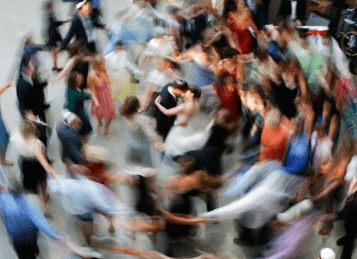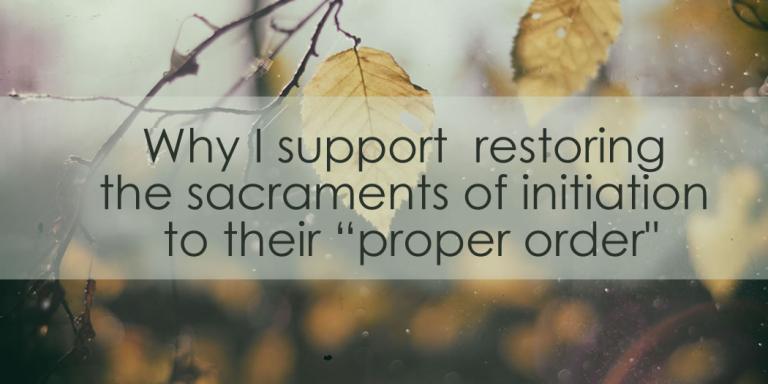Gregory Palamas once wrote that heaven would be akin to a dance without end before the throne of God (On the divine Energies, 76). This image is powerful, one can imagine the Church adorned in wedding garments joyfully being led into the dance of the life of God. Each step in rhythm with grace and love, each measure drawing us into the embrace of the unfathomable mystery. Such a vision is in many ways to wonderful for words, but for inquiring minds the question may naturally be raised, “What will the music of heaven sound like.”
This article seeks to posit the thesis that the music has already begun, and that the themes that will make up the eternal symphony have already begun to find their place in the scores of our lives. This heavenly music if found in the life of the Church as they liturgically hear and proclaim that paschal mystery; that the life, death and resurrection of Jesus is for you.
How does the Church remember the life and death of Jesus?
When I was first starting out in my work a youth minister in a Lutheran Church we talked a lot about the act of proclaiming “The Gospel.” That is we told people that Jesus had lived, died, and rose for them, not just as some point in history, but in a way that still relevant. The whole life of Jesus is an act of salvation that we are called to share with people for their lives today. Today Christ is born for them. Today Christ is killed for them. Today Christ is raised for them. Our hope was that by hearing this message people would be given the gift of faith and would come to a saving trust in Jesus.
One of the key insights I had as I became a Catholic was that once faith has arisen the proclamation of the life of Jesus does not cease. It must be proclaimed again and again, and not just proclaimed but embodied. Each day Christ is Born for us and in us, each day we live with him and die with him, each day we are raised again. We participate in this most powerfully as the church comes together to celebrate the Eucharist in obedience to Christ’s command to “do this in remembrance” of me. This is more than aremembrance of the historical past but becomes a re-memberance in the present as we affirm again and again our place as members of Christ’s Body.The truths we know through the proclaiming of the Gospel are established and deepened in our lives and heart in the liturgical remembrance, and in my celebration Christ is present for me with a tangibility so particular and tangible that I can taste it as I partake in the Eucharist. The sacraments are the Gospel proclaimed again and again, driving the mystery of Christ deeper and deeper into my life and transforming my heart.
This re-memberence becomes a foil for the whole Christian life. It is the very music that the we will dance to as we dance without end before the throne of God. In other words Jesus is the music of eternity, and the liturgy is the place where the Church comes together to dance to the rhythms of his grace. The liturgy is a participation in the life of heaven for it is a participation in Christ.
The history of the liturgy as an improvisational dancing
If one were to accept my thesis that the liturgy is the place where the church dances to the melody of Jesus Christ himself, then it opens up a whole new set of lenses through which the history of the liturgy can be seen. Each development is a natural evolution of the dance as it encounters new cultures, places, and times, which bring with them their own dance steps. The melody is deepened, the dance becomes a improvisatory promenade of peculiar people from poles apart. In the liturgy we join hands with Christians from fourth century Jerusalem, ninth century Rome, thirteenth century Bavaria, and twenty-first century Colombia, each place and time helping to form, and reform, the dance with their own particular genius and style. The music is a form of call and response. God calls us in the person of Christ, and the Church responds my embodying Christ in their own time and culture throughout history.
Some of the early dance moves took the form of Biblical Typology. The first language that was given to the church was that of the scriptures. They began to communicate the reality of the saving action of Christ in terms of the types and symbols that were seen in the Hebrew Bible. The Red Sea no longer simply referred to the saving action of God in the exodus, but was a symbol that found its competition in the saving action of God and its continuing significance in the sacramental life of the church.
The practice of Gathering on Sunday was also an early way of improvising They would gather together to meet on the day of resurrection. This move also incorporated the Palestinian culture and the Jewish scriptural tradition. Sunday was traditionally seen as the first day of creation, with the resurrection the church began to see Sunday as a sign of God’s new work in Christ of restoring the whole word to relationship with God. This “eighth day” became a way of expressing the new reality of Jesus in the familiar language of Judaism.
As the church continued to grow and develop in different places it would incorporate the culture and symbolic language. Just as the Jews before had endowed the cyclical solar and lunar cycles with the flashpoints of historical significance in their self-understanding (the equinoxes became Sukkot and Passover; the solstices became Chanukah and Shavuot) the Church began to incorporate major liturgical celebrations around the natural rhythms of the solar and lunar year (Christmas and Easter). This functioned powerfully in the process of making the liturgy something that all cultures could understand and dance with. Nearly all cultures have an acute awareness to the rhythms of the sun and the moon. There signs in the sky helped function as a metronome that helped translate the song of Christ across continents with a shared language. Soon the year itself became a way of communicating the song of Christ in the dance of the church.
Saints as exemplars of dancers across culture and time
Even before the Church learned to dance through the years and months it learned to dance with the saints. Early on the church would gather round the graves of Christians who had given up their lives as the ultimate response to the call of God. Although originally regional observances, these memorials slowly made their way into the larger life of the church and began to fill in the gaps of the year so that each day was given its own space to turn-a-rug in a way that connected to the dancing church in far reaching times and places. Eventually the life of the global church was being enriched by responsorial movements of people in every time and place. No matter who you were, within the life of the church, one could find people who danced with Jesus in your language and culture.
Fasting and Feasting
Occasionally the church would go seem to develop two left feet. Thecall of God’s saving work of Christ might seem to get lost, or perhaps the response of the people would be drowned out. Sometimes the melody was muffled my emphasis on the cult of the saints. Although saints originally functioned as lampstands to hold up the light of Christ, as piety surrounding them increased they could become so admired that they became distractions, taking the focus away from the light itself. This same tendency could emerge in private devotions, which could sometimes become endowed with superstition or an overly inwardly spirituality which resulted in a rupture within the gathered community and the church’s mission to the world. Sometimes culture itself could drown out the melody. As Christianity became more accepted in more places the call of the cross would get lost. There was no longer a cost to the faith but rather an earthlyadvantage to becoming Christian.
Whenever the call of God in Christ seemed to get lost, the Church would assert it again by bringing the focus back on the saving event of Jesus. The calendar would get cleared of superfluous additions and renewed emphasis would be placed on the high moments of Paschal joy (Sundays, Easter, Christmas, etc).
When the response of the church would get drowned out by the culture, or an overall complacency would come into the Church, periods of penance would enter as ways of reminding the Church of its vocation to be the body of Christ given for the life of the world. Lent emerged and evolved into a period for the church to be united in submitting its life more fully to the path of discipleship and the way of the cross. In the west ember days developed, using the rough outlines of pre-existing cultural practices and transforming them into opportunities for fasting and orientation toward Christ. Advent also emerged as a way to remind the Church of their eschatological destiny and uniting them in their present asceticism with their historical place in the history of salvation.
Challenges today
The image that Gregory painted of our life with God as an eternal dance has been an image that has captured the hearts of many of the faithful for centuries. My reflections in this article have sought to look at the history of liturgical developments as a natural part of that dance. Although there certainly have been missteps and divisions over the course of time I think as a whole each community of faith has learned to dance to the music of Jesus in beautiful ways. Today offers its own challenges as well. The liturgy is not the possession of the historian, but of the people of God, and every generation must proclaim it anew for their own time. As Robert Taft states:
There is no ideal model of Christian feast or calendar which we must “discover” and to which we must “return.” Rather, it is up to each generation to do what the Apostolic Church did in the very composition of the New Testament: apply the mystery and meaning of Christ to the Sitz im Leben of today. A liturgy is successful not because of its fidelity to some past ideal, but because it builds up the Body of Christ into a spiritual temple and priesthood by forwarding the aim of Christian life: the love and service of God and neighbor; death to self in order to live for others as did Christ. (Beyond East and West, 27)
Today the Church faces a new string of Challenges. Religious communities are coming together in new and unexpected ways. Different liturgical traditions are intermingling and Christians are encountering cultures that don’t dance in quite the same ways they are used to. This presents both great challenges and opportunities. The western world is increasingly approaching religion as irrelevant and, in some cases, an enemy to be done away with. If we can learn to weave new responses to the song of Christ we may be able to sing the paschal mystery in such a way that the world may once again have ears to hear. We can also reject this opportunity; we can become entrenched in our way of dancing, not open to paths for unity.
These are just a few of the innumerable challenges that will impact the Church as it continues to struggle with how to dance to the melody of Christ. I have great hope we will be able to take up the standard. After all it is a task that is not done by us alone but is an effort taken up by hands from all ages and times, for liturgy is truly a dance of all the saints in Christ throughout all generations both living and dead.













